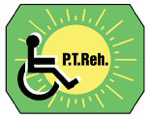


|
Current issue
Archive
Manuscripts accepted
About the journal
Editorial board
Reviewers
Abstracting and indexing
Contact
Instructions for authors
Publication charge
Ethical standards and procedures
Editorial System
Submit your Manuscript
|
3/2023
vol. 37 abstract:
Original article
Unilateral and bilateral jumping performance in female basketball players with and without a history of lower limb injuries
Magdalena Zawadka
1
,
Wojciech Talacha
1
,
Kamila Oleszczak
2
,
Joanna Paprocka
2
,
Agata Czepinska
1
,
Lena Sobiech
3
,
Piotr Gawda
1
Advances in Rehabilitation, 2023, 37(3), 23–33
Online publish date: 2023/09/29
View
full text
Get citation
ENW EndNote
BIB JabRef, Mendeley
RIS Papers, Reference Manager, RefWorks, Zotero
AMA
APA
Chicago
Harvard
MLA
Vancouver
Introduction
Lower limb injuries are major problems in team sports, especially among female players. The study aimed to investigate how lower limb injury history compared to no history of injuries affects unilateral and bilateral jumping performance in female basketball players. Additionally, knee and ankle mobility were investigated. Material and methods Twenty-one female basketball players participated in this study: 12 players from the elite level and 9 from the university team. There were 21 limbs with an injury history of knee or ankle sprain. Two jumping tests were conducted: a two-leg countermovement jump (CMJ) without arm swing, and a series of single-leg jumps within 15 seconds. Parameters of jumps were detected and measured using the optical measuring system. Injury history was investigated using a survey. Results Elite players had a greater CMJ height and specific and total energy than university players. Elite players had greater active knee extension and smaller ankle dorsiflexion than university players. No significant differences were found between knee and ankle injuries in terms of the parameters of CMJ and single-leg jumps or range of motion. There were significant correlations between the frequency of jumps (r = -0.66, p = 0.001), total energy (r = 0.55, p = 0.009), contact time (r = 0.49, p = 0.02), height (r = 0.46, p = 0.03) and the time elapsed since the injury. Conclusions Coaches and physiotherapists should consider the connection between time elapsed since the injury and jumping performance when evaluating female basketball players' abilities and risk factors for re-injury. keywords:
Ankle, Knee, Plyometric exercise, Sports, Rehabilitation |
    |